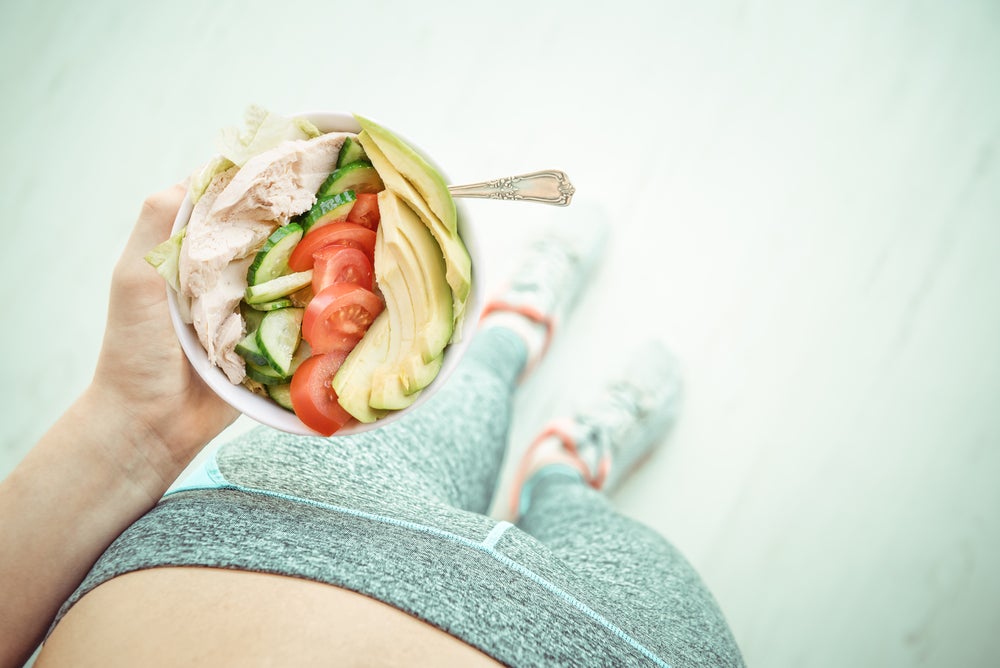Eat Yourself Out of an Overtraining Hole

If you’re a fairly serious athlete, you’re bound to go through periods in your training cycle when you over do it. Even elite athletes, who have coaches literally monitoring almost every step they take, can fall into the trap of training too hard and pushing their body beyond its limits.
While finding the perfect balance between putting in the necessary miles and allowing for proper recovery is the Holy Grail, the reality is that many often overstep the tight rope that is optimal training and find themselves bordering on being overtrained and desperate for recovery.
If you ever find yourself in this dreaded position, backing off your training isn’t the only solution, nor is it guaranteed to improve the situation. The amount and types of food you put into your body before–and even more importantly, after–your workouts can help the recovery process. Here are three simple, but effective nutrition changes you can make to help dig yourself out of that ovetraining hole.
RELATED: How Do I Know If I’m Overtraining?
1. Increase your caloric intake.
The first thing an athlete has to look at when they’re overly tired (or worse, overtrained) is the amount of calories they’re taking in on a daily basis. The reality is that many athletes do not eat enough calories to fuel their daily expenditure. This lack of calories means the muscles aren’t getting the nutrients and fuel they need to recover optimally.
Usually, this caloric deficit is a result of athletes wanting to lose weight to hit their “racing weight”, or perhaps just to be healthier in general. Unfortunately, trying to lose weight and training hard are two diametrically opposite goals; you need to restrict calories to lose weight and you need to consume calories to train hard.
So, if you find yourself feeling lethargic or riding that line between overtraining and optimal training, it’s important that put your weight-loss goals on hiatus for a few weeks and give your body the fuel it needs to recover.
How to intelligently increase calorie intake:
Determine the total number calories you’re burning per day. This number includes your basal metabolic rate (how many calories you burn without exercise) in addition to the number of calories you burned on your run. For a simple way to way to determine this number, you can use this handy runner’s calorie calculator.
Next, since you’re focused on optimal recovery, add an extra 300-500 calories to your total calorie expenditure for the day to guarantee you’re getting in all the calories and nutrients you need. While it may feel like you’re cheating your weight-loss goals in the short-term, calorie cycling (a short period of eating more calories) can actually help dieters break through weight-loss plateaus by resetting the metabolism.
It’s also important that you increase your calorie intake at the right times and with the right foods. Simply eating an extra helping at dinner or having a handful of junk food at work isn’t going to help you recover. Instead, focus on adding nutrient-dense and protein-rich foods immediately before or after your workouts or adding a protein supplement to your morning or nighttime routine. By eating the right foods at the right time, you can increase the speed at which your body recovers.
2. Eat healthy, lean sources of protein.
Protein is the main muscle-building nutrient required to repair the small micro-tears inflicted on the muscles with every challenging workout. Therefore, it is critical that athletes who are in danger of overtraining consume ample amounts of lean protein. This extra protein consumption will provide the essential nutrients and amino acids needed for muscle repair.
How to incorporate extra protein in your diet:
The most complete proteins come from animal sources such as fish, poultry, and limited amounts of red meat. If you think you’re slightly overtrained or riding that fine line, consider adding salmon, tuna, and chicken to your menu. These protein sources also have other important nutrients, such as omega-3 fatty acids and iron.
Don’t add artificial animal protein sources like deli meat or processed meats. Simply add grilled chicken breast to your lunch—on a salad or in a sandwich—and include salmon or red meat in your dinner.
If you’re a vegetarian, you’ll need to combine protein sources to ensure you’re getting the full range of essential amino acids. For example, you can combine grains with legumes or dairy, vegetables with soy or dairy, or legumes with nuts. Whatever your favorite combination, make sure you’re eating extra protein if you believe you’re pushing the boundaries of overtraining.